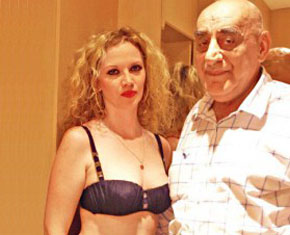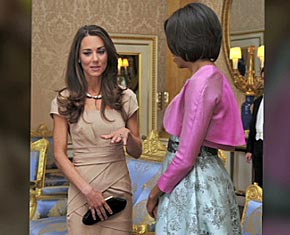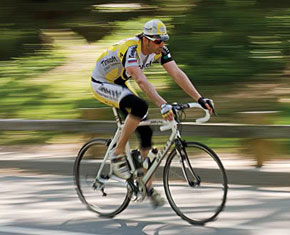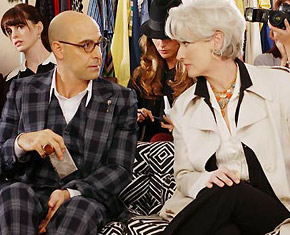 1
1 Following a period of revolution and tumult in Central, Eastern and Southeastern Europe that preceded the eventual dissolution of the Soviet Union in 1991, many former socialist nations began to adopt democracy as their political system of choice. Such a huge political shift – from an ostensibly oppressive system to a supposedly better one – was always going to have a serious social impact on the countries involved. What many people did not foresee, however, was the effect it would have on the role of women.
 Although reality is always much more complex than doctrines dictate, under socialism women were considered to be the equals of men. Swanee Hunt says in an article for Foreign Affairs magazine, “life under communism was a far cry from the auspicious pronouncements of fair treatment for all comrades.” However she acknowledges that gender parity was protected by the communist system, and when that system collapsed it opened the floodgates for a renewal of the discrimination against women that had existed under the surface in the totalitarian states.
Although reality is always much more complex than doctrines dictate, under socialism women were considered to be the equals of men. Swanee Hunt says in an article for Foreign Affairs magazine, “life under communism was a far cry from the auspicious pronouncements of fair treatment for all comrades.” However she acknowledges that gender parity was protected by the communist system, and when that system collapsed it opened the floodgates for a renewal of the discrimination against women that had existed under the surface in the totalitarian states.
It is pretty much universally agreed that women are worse off in the post-Soviet era, but what exactly are the hardships that they are facing? For one thing, the mistreatment of women is extremely pervasive. Even in the top echelons of society and government, men rarely make an effort to hide their archaic notions. A good example can be found in Bucharest, where the former mayor has been likened to a Romanian Hugh Hefner – we can think of no worse indictment of one’s character than that. He recently married his third wife, a beautiful woman many years his junior. This has become common place, even fashionable among powerful men, to leave their wives and marry very young women.
But the fact that sexism exists in political circles is not something unique to any one part of the world, so it is somewhat of a digression from the main point, which is that women are suffering genuine hardship under democracy in the former Soviet world. One of the key indicators of this fact is that prostitution and human trafficking are rife. The following passage is taken from a recent article in The Telegraph on the issue of sex slavery:
“Sex trafficking is one of the most profitable illegal businesses in both Eastern and Western Europe. In Moldova, the poorest country in Europe, where female unemployment may reach 68 per cent and a third of the workforce lives and works abroad, it is estimated that since 1989 between 200,000 and 400,000 women have been sold into prostitution elsewhere – perhaps 10 percent of the female population. The country is the main exporter of sex slaves for the continent.”
10 percent of the female population is an alarmingly, shockingly high figure. Generally speaking, women in these post-communist countries are perceived as little more than sex objects by men. Under the communist regimes a large number of women went to college and made a fair wage; now it seems that prostitution is the only option for those wishing to escape the horror of their lives in what are supposed to be new, forward-thinking, open democratic nations.
There is a distinct marginalization of women occurring in these countries, with diminished access to the labor market being a particular problem. Eastern European women, if they work at all, generally find themselves in lower-paid professions. Gender-biased hiring and promotion practices are rampant too. For example Swanee Hunt notes that “job advertisements frequently specify “attractive female receptionist” or “male manager.” In most of the new democracies, regulations prescribe early retirement for women, locking them into fixed incomes far removed from the free market.”
Other problems for these afflicted women include an increased crime rate, diminished social welfare schemes, and virtually no representation at government level. Again from Foreign Affairs: “In many countries in transition the feminization of poverty has been striking. In Russia, 87 percent of employed urban residents with incomes under $21 a month are female; above earnings of $315 a month, the figure nose-dives to 32 percent.”
It is clear to us now the hope that came with democracy in the post-communist era did not bear any fruit in reality, at least where women are concerned. Even if misogyny was rampant back then in the same manner it seems to be today, the structures and mores of a socialist regime meant that men had to pay heed to female equality. But now that those structures have been removed, the worst instincts of these men have risen to top and women are suffering because of it. All this under the banner of democracy.
Posted by Staff Writer at 02:09 AM
bargain news , Points of View |
 0
0 There is little point in denying that ours is a celebrity-obsessed culture. The evidence is everywhere, from TMZ and tabloid newspapers to the insufferable Perez Hilton. We just can’t get enough of the delicious brand of schadenfreude that can only be found in high profile tales of debauchery, adultery and financial ruin.
 But we love a good love story too, and sometimes this causes certain women to be thrust into the limelight when they might have otherwise preferred to stay out of it. I’m talking about those that haven’t actively pursued fame, but instead have gained it as a result of their partner’s high profile. It’s sheer escapism, a projection of our own desires upon these so-called “normal” women.
But we love a good love story too, and sometimes this causes certain women to be thrust into the limelight when they might have otherwise preferred to stay out of it. I’m talking about those that haven’t actively pursued fame, but instead have gained it as a result of their partner’s high profile. It’s sheer escapism, a projection of our own desires upon these so-called “normal” women.
Kate Middleton is an example that immediately springs to mind. The hullabaloo in the United States over the Royal Wedding was incredible. The fairytale story of a small town girl becoming a princess was just too much for the media and the public alike too pass up – they couldn’t get enough.
We should spare a thought for Kate – or as she is now known, Catherine, Duchess of Cambridge. How is she to be expected to cope with the universal adoration that is suddenly being heaped upon her? She is, after all, just a regular, normal girl.
But of course the media doesn’t spare a thought for anyone, and has quickly gotten down to work analyzing her every move. She has effectively been reduced to the role of a voiceless runway model, there for us to talk about as if the sole purpose of her existence was to please us – the slobbering, ignorant, apathetic public. We created the fairytale narrative for her in the first place, so we should get to define her role within it, shouldn’t we?
This twisted sense of entitlement has manifested itself in the form of countless recent articles, focusing solely on Middleton’s appearance. Here is an extract from a piece in the Examiner (we shudder to think what the News of the World would be saying about her right now, had it not been sent to the scrap heap last week):
“[Kate] looked elegant and classy and very fairy-tale-like, but not unapproachable. The dress was that kind of dove gray that was elegant without being ‘look at me!’ Color-wise, people usually want to make a statement, but she knew all eyes were going to be on her anyway.”
With Kate, the word that just kept coming to my head to describe her was demure. Appropriate. I think she defines the new monarchy in that you feel like she’s young and hip, yet regal.”
This type of materialistic obsession with her appearance would seem bizarre in any other context. “The new monarchy,” “young and hip, yet regal” – how does one come up with such utterly vacuous garbage? They’ll be expecting to see the Queen sporting a pair of designer skinny jeans and Ugg boots next.
Though Middleton is a pertinent example, she is by no means the only woman reduced to the role of mannequin by the media and the “adoring” public. For instance there’s Michelle Obama, who has become a mainstay in gossip magazines, with little mention being made of her work with homeless shelters, women’s rights (the irony…) and all the other great causes she champions in her role as First Lady of the Unites States.
The saddest thing about all this is that the target audience for all of this celebrity “news” is women. This is leading to a perpetuation of the trend and allowing the status quo to remain in place, whereby women are there to be seen and not heard. It’s about time we start demanding that these high-profile women, however beautiful, are given a voice – a voice that will be listened to.
Posted by Staff Writer at 08:27 AM
bargain news , Points of View |
 0
0 Sometimes, when walking around New York City, it seems that there are two entirely distinct species of hominid occupying every street and every avenue, trying but failing to co-exist. One is a a timid, slow moving creature that plods along the city streets, often nonchalantly; the other is a battle-hardened, bi-wheeled beast that weaves its way in and out of traffic with little concern for its own safety or the safety of others. I am of course talking about pedestrians and cyclists.
 If you’re unfamiliar with this whole issue, you might be surprised by just how divisive it really is. It’s almost as polarized as those other infamous dichotomies: Democrats and Republicans, Yankees and Red Socks, iPhone and Android. It seems you’re either fiercely pro-cycling or fiercely against it; or rather those in the middle ground are rarely heard – which isn’t surprising as the debate tends to get pretty loud.
If you’re unfamiliar with this whole issue, you might be surprised by just how divisive it really is. It’s almost as polarized as those other infamous dichotomies: Democrats and Republicans, Yankees and Red Socks, iPhone and Android. It seems you’re either fiercely pro-cycling or fiercely against it; or rather those in the middle ground are rarely heard – which isn’t surprising as the debate tends to get pretty loud.
To be fair, it’s hard to be against cycling from the get go. If cycling routes are clearly marked , sensibly separated from the rest of traffic, and kept away from pedestrian areas, no problem should arise. Cycling is a major mode of transport in many cities across the world and a lot of people would be willing to vouch for its efficiency. An amazing video went viral recently, showing a time delayed rendition of rush hour in the Dutch city of Utrecht. When properly managed, cycling can undoubtedly help ease congestion and help the environment.
But what about when it’s not so well managed? New York City is notorious for its bungled attitude to cycling. People have been trying to act as if all is well these days, what with new cycle lanes on Second Avenue and elsewhere, but I can tell you from experience that everything isn’t as rosy as some would have you believe. That’s right, I myself tried cycling in the city for about two months, after the subway fare went up again in January. And I can tell you right now it was terrifying. I came close to be knocked down by vicious cabbies on countless occasions. Eventually I began to dread every journey and had to give it up – the constant fear of having my bike stolen didn’t help either.
Even the new measures the city is taking to make cycling safer are having more of a negative impact than a positive one. Bike lanes are placed in between moving traffic and parallel parked cars, leaving cyclists struggling to avoid vehicle doors, and pedestrians struggling to cross the street as agitated cyclists whiz by (New York’s cyclists have a bit of a color-blindness problem, rarely stopping for a red light unless their life depends on it).
So far I’ve been pretty measured in my depiction of New York City cyclists, wouldn’t you agree? It’s clear that, for the most part, they are a danger only because the city’s infrastructure isn’t set up to deal with them. But what happens when the cyclists have free reign, when they can’t blame crazy cabbies for their erratic weaving and bobbing? Where on earth do cyclists have free reign you ask? Allow me to present the case of Central Park.
The Park is closed to traffic on Monday through Friday, 10am to 3pm and 7pm to 7am the following morning, and weekends from 7pm Friday to 7am Monday. During those hours pedestrians and cyclists can have the Park to themselves, and it just so happens that those are the hours in which I spend most of my time there. But the fact is, unless you’re on the lawn or another green area free of all asphalt, cyclists in the Park insist on making your leisurely stroll an anxiety-inducing experience.
The rules of the Park in relation to cycling state the following:
- Pedestrians have the right of way at all times.
- At crosswalks, cyclists must slow down, yield to pedestrians and then proceed cautiously.
- Cycling is prohibited on all pedestrian pathways.
- Cyclists are required to obey all traffic laws, such as traffic signals, stop signs, and a maximum speed limit of 25 mph, though it is recommended they travel at a speed appropriate to their surroundings.
- The law requires that children under 14 years of age wear a helmet, but it is recommended that all cyclists wear a helmet.
- They must always travel counterclockwise around the Park.
- Cyclists must use only the outer half of the recreation lane when the drives are open to cars; when they are closed to cars, cyclists must stay out of the recreation lane which is for runners and walkers only.
I can safely say I have seen every single one of those rules being broken, on multiple occasions. You see, the people that use the Park for recreational cycling aren’t your regular commuters; often they are kitted out in full cycling gear while riding competitive racing bikes – it doesn’t take a genius to see that these guys – and girls too – have no intention of sticking to any speed limit, much less concede the right of way to a lowly pedestrian such as myself.
It really is becoming a noticeable problem (read: I’m not becoming a bitter old killjoy, other people think this stuff too). Earlier this month, residents of the Upper East Side reacted angrily to the news that crosstown bike paths were planned for Central Park. They would rather cyclists were kept away from pedestrian paths altogether.
“I see my city, the way I travel and how I get around being revamped to accommodate a very small percentage of the population,” said one resident. “It really isn’t a right to travel the Park on a bicycle.”
So what is to be done about all this? Aside from a major overhaul of the city’s bike network, it’s not clear if anything can be done that would yield immediate results. Every few months we hear reports that the NYPD are starting to crack down on cyclists in the Park, but inevitably when the hype dies down the status quo is reintroduced and the bikers roam free again. For now, all we can do is advise you to be careful. If you bring your dog to the Park keep it on a tight leash, and if you have kids make sure they are by your side at all times!
Posted by Staff Writer at 08:49 AM
bargain news , Points of View |
 0
0 As anyone who’s ever watched an episode of The Rachel Zoe Show (or, god forbid, tried to call a fashion house themselves) knows, basic kindness is a hard  thing to come by in the world of fashion. We can’t help but wonder why. Is the trend toward mean a reflection of how tough the business is or is it all about status?
thing to come by in the world of fashion. We can’t help but wonder why. Is the trend toward mean a reflection of how tough the business is or is it all about status?
On the one hand, it’s not hard to see why fashionistas have to develop a thick skin. The ratio of fashion jobs to fashion enthusiasts is skewed in a way that makes for a lot of competition. This means that, much like cliche reality show contestants, most fashion industry folks are not here to make friends. They’re here to get ahead, and sometimes the best way to do that is to keep those at your level or below down while desperately trying to get in with those ahead of you. A word of caution, though – someday, those people you trampled on will be the people whose favor you want to curry, and everyone remembers a slight.
There’s also a less generous hypothesis for the unkindness running rampant in the industry: fashion is a high-status industry, peddling expensive goods everyone wants. Just like restaurants, which are often dreadful if they don’t need to be good because of location, fashion folks don’t have to be nice. People will still buy a top-brand bag, even if their salespeople are rude.
Evidence suggests, however, that even when rudeness doesn’t hurt, being kind might get you even further. In their book The Power of Nice: How to Conquer the Business World with Kindness, Linda Kaplan Thaler and Robin Koval discuss how their own brand of friendliness helped them rise to the top of the advertising world. We know a few fashionistas who should strongly consider giving it a read.
Leila Cohan-Miccio
Posted by Leila Cohan-Miccio at 02:18 AM
bargain news , Points of View , Relationships |
